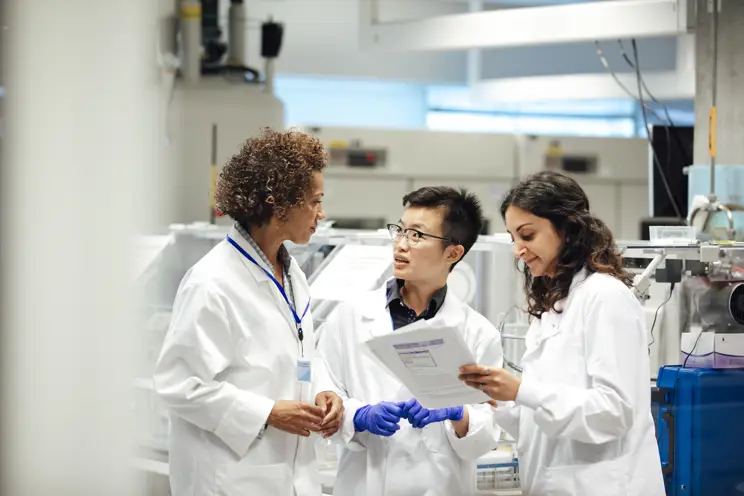RSSL were originally supplied with peroxide test strips by the client, however it was found that these test strips would only work in aqueous samples and not the cyclohexanone.
RSSL utilised their knowledge to use different extraction techniques to try and enable the peroxide to be extracted in an aqueous layer to use the strips supplied by the client using such techniques as solid phase extraction, simple liquid extraction, and the centrifugation on the extracted solution to remove the solvent.
However, small amounts of the cyclohexanone reagent were still miscible with the aqueous layer, causing a problem with the test strips the client had originally advised RSSL to use. A variety of alternative test strips were sourced by RSSL and many of these had the same issue with non-aqueous solutions, caused by the cyclohexanone miscibility with the aqueous layer. However, the use of the Merck brand peroxide testing strips did work after several liquid extractions, with the small levels of miscible cyclohexanone not having a detrimental effect of the test strip result.
The client had reservations proceeding with the use of the Merck test strips so RSSL investigated alternative peroxide testing techniques. This included both manual and potentiometric titration assay techniques and analysis by UV-Vis, each technique investigated included undertaking a feasibility test with varying levels of success with the low-level specification hindering many of the techniques.

Utilising the technical knowledge across RSSL’s departments, combined with research, additional titrations/assay analysis were discovered.
During one of the regular client calls which forms part of RSSL’s project management, the client expressed their wish to move away from the alternative methods investigated and instead proceed with the originally suggested peroxide test strip method using the Merck test strips. RSSL detailed the method of cyclohexanone using several liquid extractions to produce an aqueous layer which was tested using peroxide test strips to confirm, if any, the concentration of peroxide in the cyclohexanone. This method was fully validation at RSSL specificity, linearity, precision, intermediate precision, limit of detection, limit of quantification, range and robustness performed. A full validation report was executed and sent to the client, which was then signed by both parties.
RSSL have since continued to carry out routine testing for the client on the cyclohexanone samples for possible peroxide contamination using the method developed and verified in house.
Switchboard: +44 (0)118 918 4000
Customer Services: +44 (0)118 918 4076